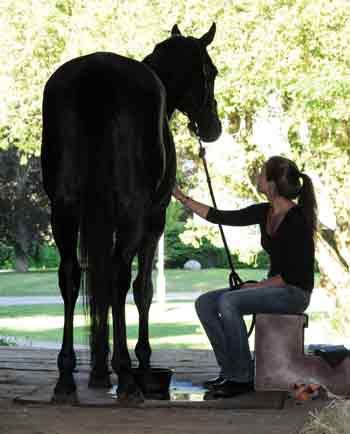
How a Hoof Abscess Starts
The most common way that bacteria does this relates to fluctuating moisture in the environment. When the ground is dry, hooves become hard and somewhat brittle. This causes small fissures (cracks) to develop in the sole. When the ground becomes wet, the hoof acts like a sponge and softens, further opening these small cracks. Bacteria in the environment can take advantage of these small breaches in the otherwise impenetrable hoof wall and invade the tissue inside.
As they invade the warm, healthy inner hoof tissue, the bacteria multiply rapidly. The horse’s immune system comes to the rescue, but during the battle between good and evil (the horse’s white blood cells versus bacteria), casualties occur as white blood cells die and cause pus to accumulate.
This pus exerts pressure in the confined and inflexible hoof wall. If you’ve ever had swelling under a nail, you know the pain this causes. Now imagine the pain a horse might deal with as they stand on an abscessed hoof.
Hoof abscesses can, however, occur at any time of year, so the weather is not the only cause. Sole bruises caused by hard ground and penetrating hoof wounds also invite bacteria to invade the hoof. One type of penetrating wound is a close nail, or one that is driven too close to the sensitive laminae (internal supporting structures between the outer hoof wall and the coffin bone). This creates a convenient path for bacteria to enter on the nail, which can lead to infection.
Poor hoof conformation can also be a contributing factor to the development of a hoof abscess. Some thin-soled horses are naturally predisposed to frequent abscesses. This is likely due to their increased risk of sole bruising and the shorter distance bacteria have to travel between the outside and inside of the hoof.
What You Might See
While you might expect to see a severely lame horse, keep in mind that not all abscesses are created equal. Observable signs depend on how large the abscess is, where in the hoof it is, and how long it’s been developing. If caught early, some horses are only slightly lame. Others may have some leg swelling up to the fetlock, while others may have a bounding digital pulse and a hoof that’s hot to the touch.
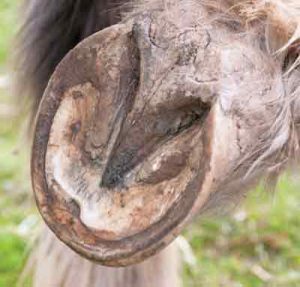
Horse owners that have seen abscesses before may feel comfortable identifying one and starting treatment on their own. If this is your first time with a hoof abscess, or you feel there may be other complicating issues, it’s a good idea to call your veterinarian for help.
If lameness is accompanied by a visible injury, such as a penetrating wound, or is part of a chronic hoof disease, radiographs may be necessary to assess any internal hoof damage.
Treating Hoof Abscesses
For uncomplicated hoof abscesses, treatment starts with releasing the pressure and granting the horse instant pain relief. This is done by draining the abscess. If your horse is an extremely painful condition, sometimes a local nerve block and/or sedation may be required for safe treatment of the wound. For this, you’ll need a veterinarian.
Using a hoof knife, your veterinarian will clean and trim back the horse’s sole, which gives the ability to see any dark spots or tracts. These are usually indicative of where the abscess is. Hoof testers can also help narrow the location of the abscess.
The hoof knife is then used to carefully pare deeper until the pocket of infection is hit. Once opened, the abscess drains, although it’s usually anticlimactic. A draining abscess may only be a tiny wet spot or area of dark fluid that trickles down. However, the horse may visibly show his relief.
If left alone, an abscess will eventually rupture on its own. However, there are a few downsides to this wait-and-see approach. First, it prolongs pain for the horse. Secondly, if an abscess is not treated, it tends to move up to the coronary band or out the heel bulbs.
Manually draining the abscess with the hoof knife through the sole allows gravity to help with the process; a coronary band abscess (also called a “gravel”) may prematurely close, leaving some infection behind to cause a problem later.
Once drained, your horse now has an open wound in his sole. While it’s important to protect this wound from further infection, it’s also a handy window to allow for continual drainage. Therefore, packing the sole with a poultice and wrapping the hoof with a bandage for protection can ensure the abscess completely drains.
Depending on depth and location, sometimes an abscess can’t be located or easily drained. In such cases, repeated soaking of the hoof in an Epsom salt bath will help soften the hoof and draw the infection closer to the sole for easier drainage. A shallow feed tub makes for an ideal foot soak. Alternatively, there are special soaking boots made specifically for horses, or some owners make “soak bags” out of sturdy plastic IV bags.
Stalling a horse for 24 hours with a soak bag is usually enough time to soften the hoof so that on recheck with a hoof knife, the abscess is more easily drained. Occasionally, you might get lucky and the abscess drains itself overnight. This is often noticeable the next day since the horse is much more comfortable.
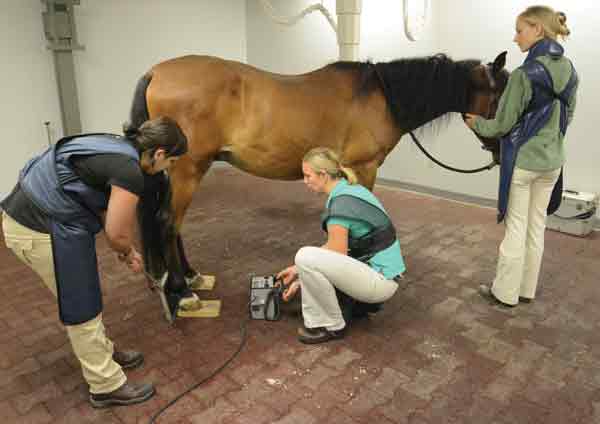
How to Prevent Abscesses
The natural expansion and contraction of a horse’s feet in response to external moisture are impossible to control, so to an extent, hoof abscesses could be considered impossible to prevent. However, a few rules of thumb can help decrease their likelihood.
Regular year-round hoof maintenance is the best place to start. Balanced hooves keep weight distributed evenly, and trimmed feet are less likely to crack and allow bacteria inside.
Providing your horse with the best of nutrition also helps keep hooves healthy, as does daily hoof cleaning and maintaining excellent stall and paddock hygiene. Removing soiled bedding and fixing chronically wet or boggy areas help hooves stay clean and dry so you’ll spend less time obsessing over abscesses and more time enjoying your horse.
Key Takeaway
In this article, you’ll find common causes of hoof abscesses, methods for treating them, and tips on how to prevent abscesses, all of which are essential for hoof care and maintaining a clean environment.
This article on treating a horse’s hoof abscess appeared in the January 2020 issue of Horse Illustrated magazine. Click here to subscribe!

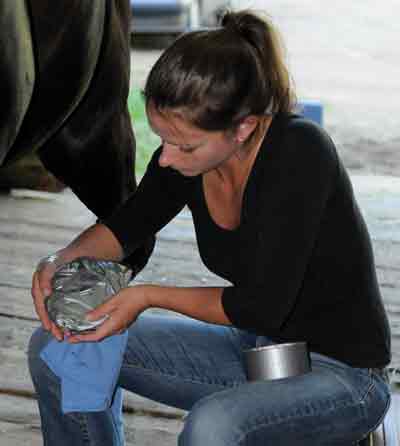



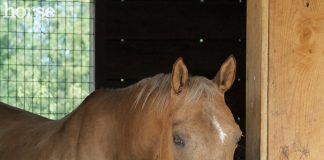

So many sleepless nights worrying about injuries and hoof abscesses. Great write-up on how to prevent infection and properly dress a wound. I’ve always found the tricky part is keeping the bandages in place without them slipping off over time.
I have a horse that is difficult to handle, even under some sedation. Is it possible to treat an abscess with antibiotics or sulfer? How about drawing salve on the foot?